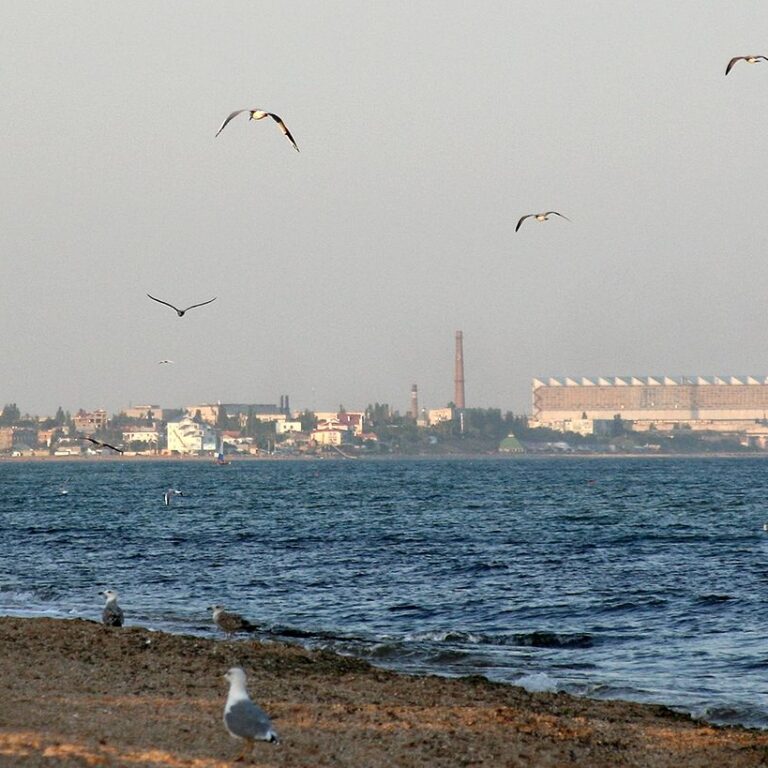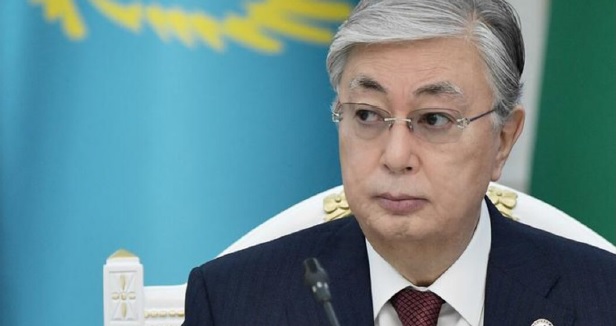Genocide does not happen by itself. In general, it is extremely difficult to coerce a conscious individual to kill another; if it were simple, it is unlikely that humanity would have reached its current level of development.
It is exceedingly difficult to persuade an entire population to kill a group that does not pose a threat to them.
One of the most eminent genocide scholars of the modern era, Timothy Snyder, stated: “to deny a human being his human character is to render ethics impossible. To yield to this temptation, to find other people inhuman, is to take a step toward, not away from, the Nazi position” [1].
Hate speech is a crucial method utilized by dictators when preparing genocide. And the Russia-occupied Crimea is a great training ground for examining how the vocabulary of hostility against peoples who “have the temerity” to deny that their territories allegedly “belong” to the empire evolved.
Association’s expert, PhD Oleksii Plotnikov researched this issue.
Let us speak briefly on the definition of hate speech. The UN defines hate speech as “offensive discourse targeting a group or an individual based on inherent characteristics, such as race, religion or gender, and that may threaten social peace”.
To provide a unified framework for the United Nations to address the issue globally, the UN Strategy and Plan of Action on Hate Speech defines hate speech as…“any kind of communication in speech, writing or behaviour, that attacks or uses pejorative or discriminatory language with reference to a person or a group on the basis of who they are, in other words, based on their religion, ethnicity, nationality, race, colour, descent, gender or other identity factor” [2].
Researchers describe a five-tiered pyramid of hate. At the first level, there are prejudices comprised of preconceptions, anxieties, and unfavorable information about a particular group. On the second level are activities based on prejudice, such as bullying, derogatory names, and humor based on unfavorable stereotypes. The third issue is discrimination in the economy, politics, education, and employment, among other areas. The fourth includes violence motivated by prejudice, includes murder, assault, arson, rape, etc. The fifth step is genocide, which is the deliberate extermination of a given group [3].
Hate speech can be expressed through spoken or written words, images, gestures, symbols, objects, and actions, among other mediums. Hate speech is characterized by its use of such tools to communicate a specific message aimed at discriminating or denigrating a particular person or group based on identity-related intrinsic features. The primary focus of hate speech is identity. Direct or indirect hate speech might occur. Open appeals for violence or annihilation of a given group, as well as its demonization and dehumanization, are examples of direct hate speech.
Through insults, threats, and a sardonic demeanor, indirect hate speech results in the humiliation and marginalization of a particular group because of contempt for the group and its significant symbols. In both instances, the objective is to distinguish one group from another, divide and polarize society, and direct aggression on a certain group [4].
Hate speech is considered an offense under the laws of most states. Thus, according to Article 161 of the Criminal Code of Ukraine, deliberate actions inciting national, racial or religious enmity and hatred, humiliation of national honour and dignity, or the insult of citizens’ feelings in respect to their religious convictions, and also any direct or indirect restriction of rights, or granting direct or indirect privileges to citizens based on race, colour, political, religious and other convictions, sex, disability, ethnic and social origin, property status, place of residence, linguistic or other characteristics [5].
Article 282 of the aggressor’s criminal code criminalizes actions aimed at the incitement of hatred or enmity, as well as abasement of dignity of a person or a group of persons on the basis of sex, race, nationality, language, origin, attitude to religion, as well as affiliation to any social group, if these acts have been committed in public or with the use of mass media. And the “modern effectiveness” of that “Russian legal norm” is absolutely rhetoric question.
International law requires states to ban hate speech. According to Article 20 of the International Covenant on Civil and Political Rights, any advocacy of national, racial or religious hatred that constitutes incitement to discrimination, hostility or violence shall be prohibited by law [6].
According to Article 4 of the International Convention on the Elimination of All Forms of Racial Discrimination, States Parties condemn all propaganda and all organizations which are based on ideas or theories of superiority of one race or group of persons of one colour or ethnic origin, or which attempt to justify or promote racial hatred and discrimination in any form, and undertake to adopt immediate and positive measures designed to eradicate all incitement to, or acts of, such discrimination [7].
From the point of view of international criminal law, the widespread use of hate speech can be considered as part of a crime against humanity, which consists in persecution of “against any identifiable group or collectivity on political, racial, national, ethnic, cultural, religious, gender as defined in paragraph 3, or other grounds that are universally recognized as impermissible under international law” [8].
In the practice of international criminal justice, propaganda of hatred has been repeatedly considered as a manifestation of a crime against humanity or genocide. In the case of Julius Streicher, the Nuremberg Tribunal came to the conclusion that “incitement to murder and extermination at the time when Jews in the East were being killed under the most horrible conditions clearly constitutes persecution on political and racial grounds in connection with war crimes, as defined by the Charter, and constitutes a crime against humanity” [9].
Those guilty of such crimes were convicted by tribunals in the former Yugoslavia and Rwanda. For example, in the case of Dario Kordić, the Tribunal for Yugoslavia recognized as a crime “encouraging, instigating and promoting hatred, distrust and strife on political, racial, ethnic or religious grounds, by propaganda, speeches and otherwise as part of a campaign of widespread or systematic persecutions, he should be held individually criminally responsible” [10].
The perpetrators of the criminal propaganda machine of hatred are subject to the rulings of international tribunals. States must denounce common criminals and isolated acts of hostility. They must stop the escalation of hate speech in public. However, the Russian Federation not only fails to erase hatred in the occupied Crimea as well as in its own and other occupied territories, but itself serves as its criminal source.
The Ukraine’s memorial to the UN International Court of Justice [11] provides a detailed explanation of the use of hate speech as a tactic for the occupation of the Crimea. It argues that the illegal and fake “referendum” was preceded by a campaign of disinformation intended at dividing the multiethnic Crimean population by instilling fear among the Russian-speaking community. As part of this effort, aggressor-controlled public speakers have criminally referred to Ukrainians as allegedly “Nazis” and “bandits” who pose an alleged “threat to Russian speakers”.
Crimean Tatars were criminally characterized by them as allegedly “nationalists” and “extremists” who allegedly “attack and murder Russian speakers”. Hate propaganda was also focused on religious groups, specifically Muslims and non-Moscow Patriarchate Orthodox, as well as social groups such as immigrants.
As part of the planned aggressive “hybrid” war, disinformation and propaganda played a significant role in the criminal Russia’s military campaign to establish control over the Crimea and simultaneously to criminally incite “uprisings” in other parts of Ukraine.
The aggressor did not despise its-controlled “media” manipulations, the production of fake “news”, outright forgeries, and lies, which propagated to the occupied peninsula’s inhabitants, to the Russian citizens, and on the international level, including the United Nations.
This criminal effort was managed by Russian secret services as part of a larger strategy that comprised informational, diplomatic, economic, and military elements. Before the occupation, the international peace that prevailed in the Crimea and it was destroyed late step by step by the aggressor’s frequent and repeated repetition of manipulative and false information.
After 2014, aggressor continued to employ hate speech to achieve his criminal objectives in the occupied Crimea. In the Ukrainian case filed with the International Court of Justice, it is also highlighted that the atmosphere of anti-Ukrainian animosity fostered on the peninsula led many Crimean residents to hide their Ukrainian citizenship because, if they did not, they faced harassment and threats. In a climate when Ukrainians were criminally labeled as alleged “fascists” and “neo-Nazis”, Crimean inhabitants with a Ukrainian identity did not risk expressing their wish to maintain Ukrainian citizenship.
After 2014, the Russian invaders criminally continue to utilize hate speech to manipulate the conscience of Crimean residents, to create in them a hatred of Ukrainians and Crimean Tatars, and making illegal attempts to “ultimately enhance” aggressor’s control over the occupied peninsula. Specifically, it is used by aggressor for criminal attemts to “legitimize” repressions against persons whom the fake occupation “authorities” deem to be either “dangerous” or just “disloyal”.
According to study conducted by the “Crimean Human Rights Group” (“CHRG”), members of the illegal occupation “government” routinely utilize hostile and xenophobic language, including in fake “official papers” and in websites of illegally “budget-funded” fake “governing institutions”.
This demonstrates the occupiers’ direct aim in carefully establishing a climate of hatred. The creation of a negative image of entire ethnic, social, and religious groups results in the emergence of a “sense of threat” in the target audience, for Russian-speaking Crimean residents, simplifying their criminal “mobilization” to fight against their own country, up to and including direct participation in hostilities.
This is particularly dangerous in the realm of education, as hate speech is utilized for propaganda to youngsters regarding “military duty” in aggressor’s criminal interests [12].
In a separate study, the “CHRG” points on the prevalence of hate speech in aggressor-controlled “internet media” in 2020-2021 in the Russia-occupied Crimea. Ten of eleven studied “information sources” had texts with symptoms of hate speech, which was discovered in 560 of 1284 “publications”.
In 16 publications, signs of dehumanization of target groups were detected. In the majority of cases, it involved insulting and demeaning words about target groups and calls for violence. Let us recall that dehumanization is one of the techniques used in incitement to genocide.
Hate speech typically targets Ukrainians, Crimean Tatars, representatives of the LGBT-community, journalists, and activists. Russian invaders systematically employ emotional impact on the audience to promote relevant criminal messages that are repeatedly repeated, so embedding negative “information” in the readers’ subconscious [13].
The use of hate speech against particular racial, socioeconomic, and religious groups is not a phenomena unique to the occupied Crimea. The Russian Federation’s senior political leadership is its criminal patron and primary source. Unmasked calls for murder, aggression, and extermination emanate from the mouths of the leaders of contemporary Russia and are aired across all aggressor-controlled sources, from state-run “television networks” to anonymous Telegram communities. Such broadcasting is one of the primary weapons used in the aggressive campaign against Ukraine.
Some characteristics of the use of hate speech in the Russia-occupied Crimea are solely attributable to the criminal “official” declaring of this area as allegedly “belonging” to the aggressor state and the presence in the Russia-occupied peninsula of indigenous people, who are object of invaders’ repressions.
Here, the extermination of Ukrainian and Crimean Tatar identities occurs primarily through repressions, which is carried out openly by the criminal “bodies” of occupation “authorities” and aims to suppress the manifestations of Ukrainian and Crimean Tatar life in Crimea. In the Russia-occupied territories of mainland Ukraine, such suppression has additional obvious signs of genocide.
Hate speech in the Russia-occupied Crimea is used to “justify” criminally the political terror and it has led to the deaths of individuals such as Reshat Ametov, who was tortured to death by the criminal “self-defense of Crimea” in 2014 [14] and Vedzhie Kashka, who died because she was not given assistance by aggressors’ punishers, and thereafter she was labeled by occupiers as alleged “extremist” for criminal attempted “justification” of their actions [15].
In Russia-occupied Crimea, aggressors’ hate speech increases permanently. Starting with mockery and sarcasm, it goes through the stage of calls for violence and ends with the propaganda of genocide. The only thing that will stop this is the victory of Ukraine and the restoration of its control over the Crimean peninsula.
Sources:
- Снайдер T. Кровавые земли: Европа между Гитлером и Сталиным. Киев, 2011.
- https://www.un.org/en/genocideprevention/documents/UN%20Strategy%20and%20Plan%20of%20Action%20on%20Hate%20Speech%2018%20June%20SYNOPSIS.pdf
- https://www.adl.org/sites/default/files/documents/pyramid-of-hate.pdf
- https://crimeahrg.org/wp-content/uploads/2022/06/mova-vorozhnechi_fin_ru.pdf
- https://zakon.rada.gov.ua/laws/show/2341-14#Text
- https://zakon.rada.gov.ua/laws/show/995_043#Text
- https://zakon.rada.gov.ua/laws/show/995_105#Text
- https://zakon.rada.gov.ua/laws/show/995_588#Text
- https://www.legal-tools.org/doc/45f18e/pdf/
- https://www.academia.edu/30834123/Propaganda_in_the_Jurisprudence_of_the_International_Criminal_Tribunal_for_the_Former_Yugoslavia
- https://www.icj-cij.org/public/files/case-related/166/166-20180612-WRI-01-00-EN.pdf
- https://crimeahrg.org/wp-content/uploads/2018/03/Hate-book-EN-1.pdf
- https://crimeahrg.org/wp-content/uploads/2022/06/mova-vorozhnechi_fin_ru.pdf
- https://crimeahrg.org/ru/7-let-nazad-v-krymu-pohitili-i-zapytali-do-smerti-aktivista-reshata-ametova/
- https://www.ohchr.org/sites/default/files/2022-02/cs.arc_.association.reintegration.crimea.docx







